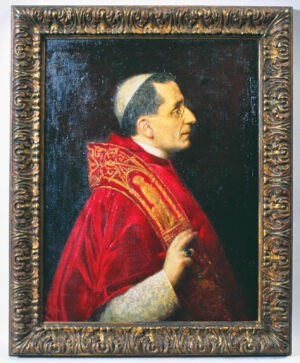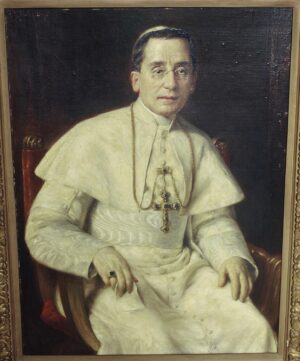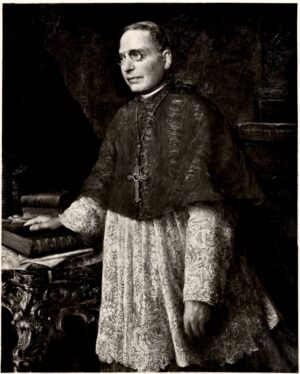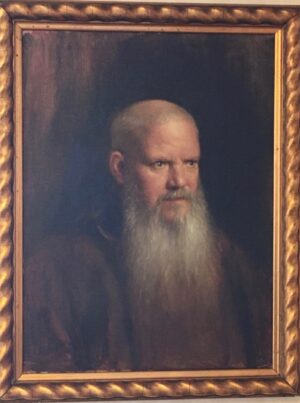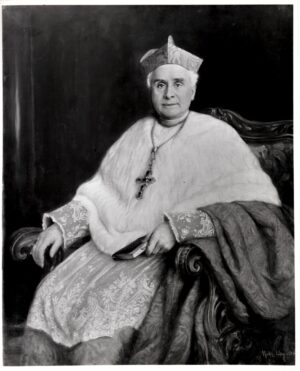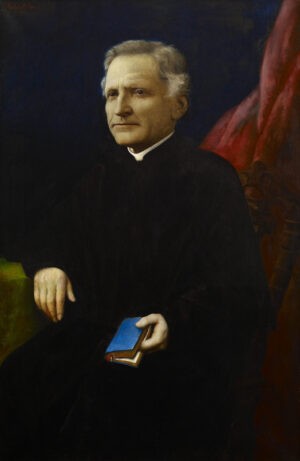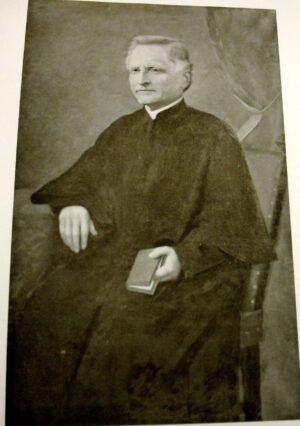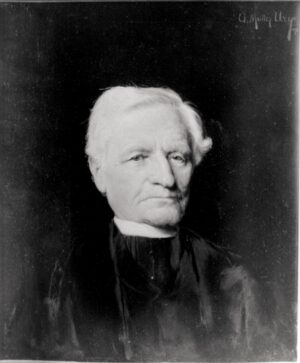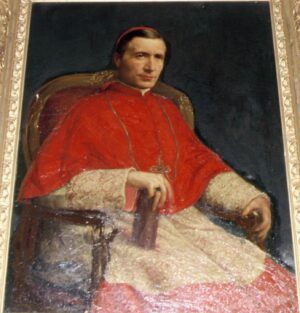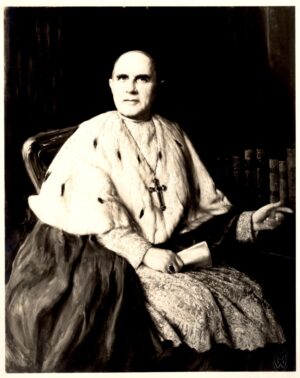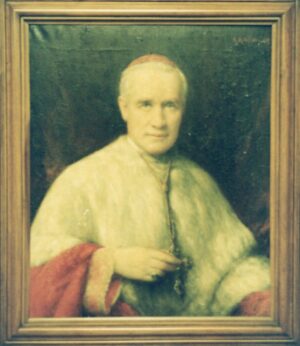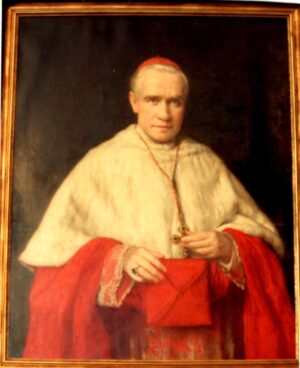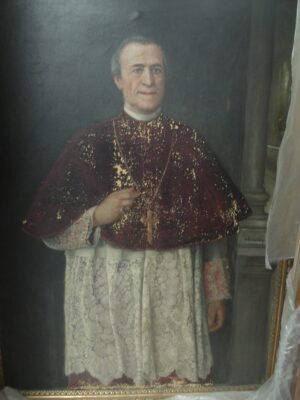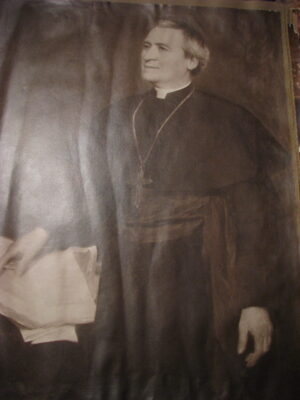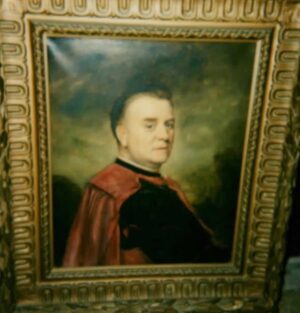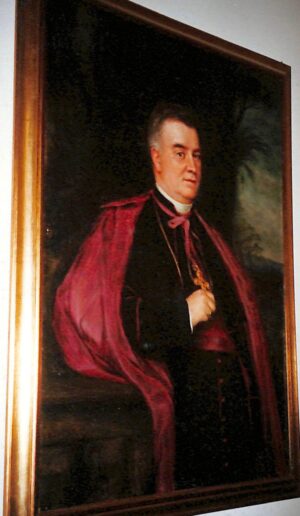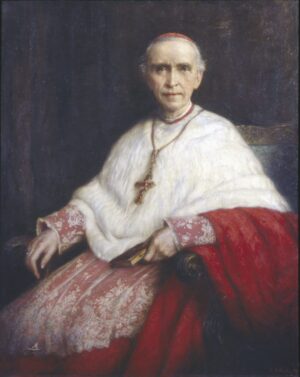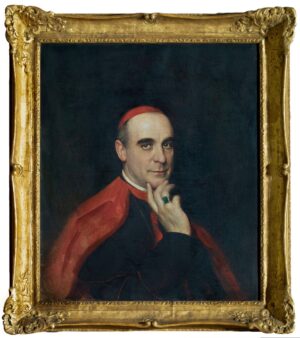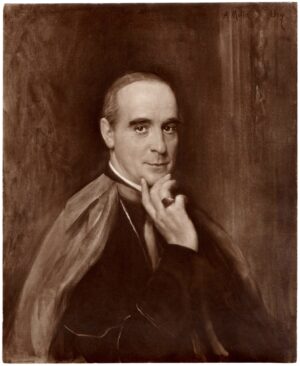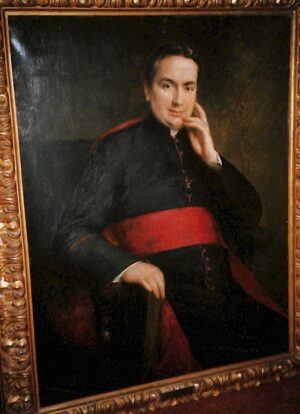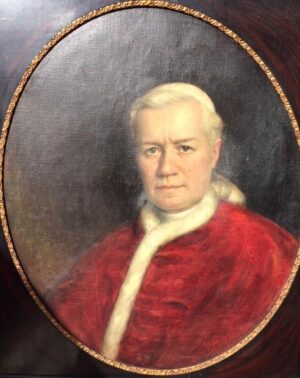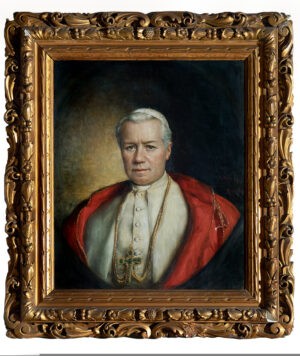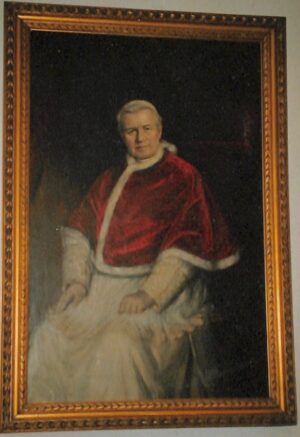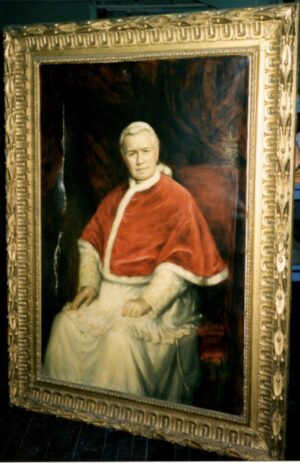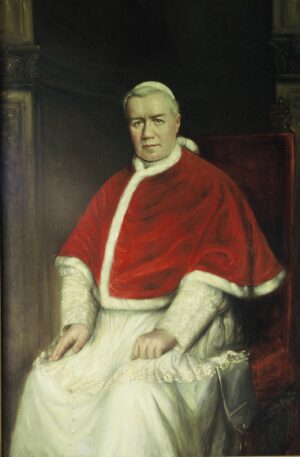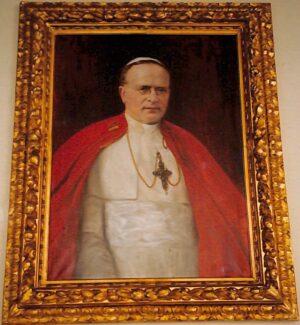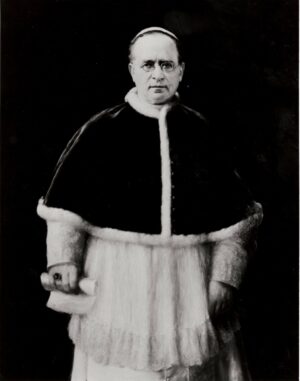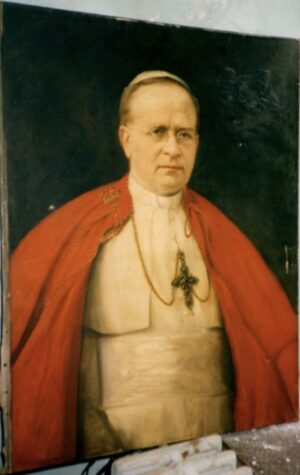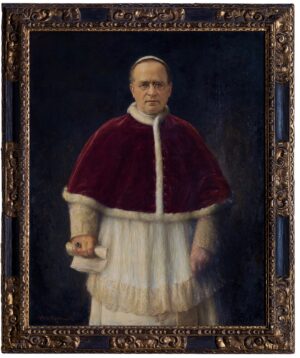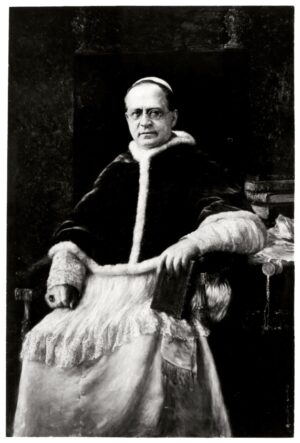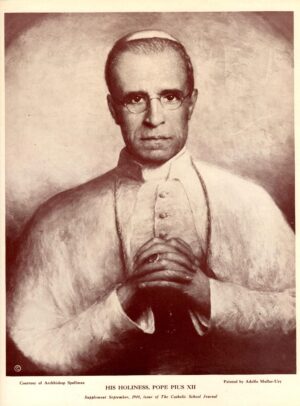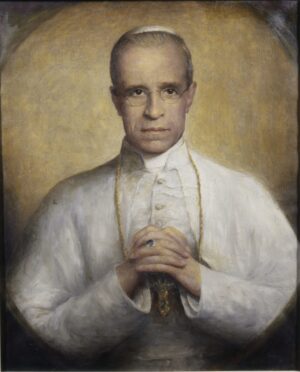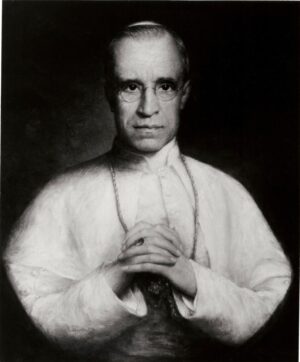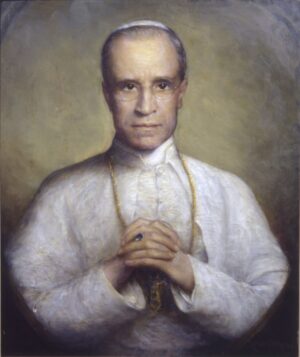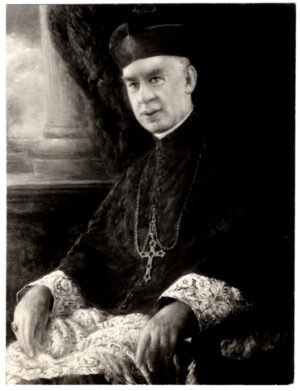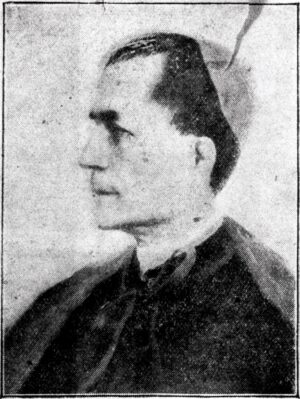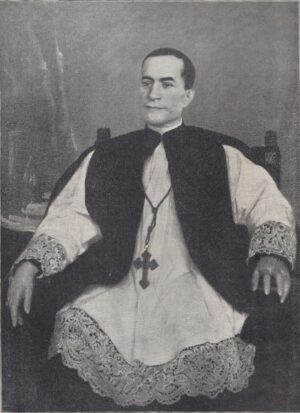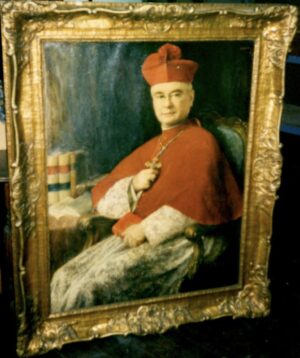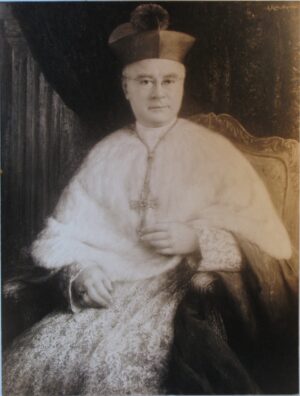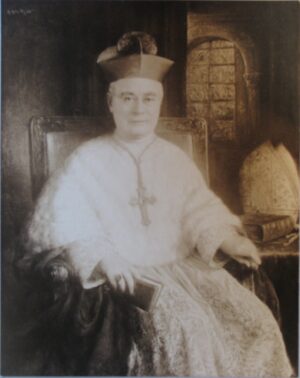Papal Portraits and Other Religious
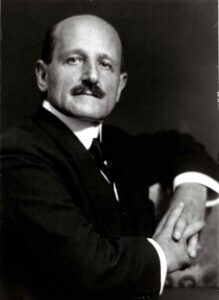
Muller-Ury in the early 1920s.
Muller-Ury was a devout Roman Catholic and was a prominent Catholic layman in New York from almost the moment he arrived in America in December 1884. His earliest portrait of a religious was of Father Fransioli of Brooklyn, a fellow Ticinese, whom he would paint again at the end of Fransioli’s life. Through this connection, he was able to get introductions to Archbishop Corrigan, who introduced him to Cardinal Gibbons. His first portrait of Gibbons was not considered a great success, but Gibbons sat for a second much larger portrait, alas lost, which was exhibited successfully in New York in 1886, and which enabled the artist to advertise his talents to New York society. However, there may be some truth in the story that he painted Pope Leo XIII in Rome in his eighteen months there before he came to America, but no such picture is known. He painted a portrait of Cardinal Hergenrother in Rome at that time, and possibly Cardinal Hohenlohe, so this is not as unlikely as it sounds.
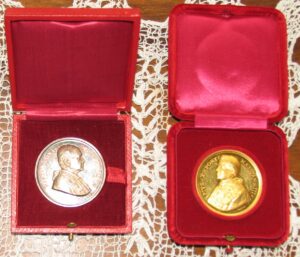
The medals given to the artist by Popes Pius XI (left), and Pius X (Gold, 3rd year of reign, right). Courtesy of the Adolfo Muller-Ury Stiftung.
What is certain is that in 1907 he received a commission from Mrs Anne Walker of Philadelphia to paint a three quarter portrait of Pope Pius X for which the Pope gave him a gold medal. He made a second version of this portrait in 1908 and again in 1911. But he also painted quite a large number of bust-length portraits of the Pope, in 1908 and later. Indeed, at their last meeting, the Pope took off his skull cap and presented this to the artist; as the Pope was later made a saint, this is considered a holy relic. It was during this visit that he painted two portraits of Cardinal Secretary of State Rafael Merry del Val, and others. Muller-Ury also painted Benedict XV in 1920, two versions, and was to learn from his Vatican contacts that, unlike the famous French sculptor Auguste Rodin who had created a bust of the Benedict XV the previous year, Muller-Ury had given the Pope ‘no fastidio’ (no trouble) and that consequently the reputations of the ‘artisti Americani’ at the Vatican were now very high. He painted several portraits of Pope Pius XI in 1922 and a single one in 1930. Pius XI also gave him a medal. The 1930 portrait was three quarters seated, like that of Pius X, and was painted expressly to hang in the foyer of the Nuova Pinacoteca at the Vatican (its disappearance from the inventory of the Vatican is an unsolved mystery). During this visit he also painted his great friend Cardinal Bonaventura Cerretti, who appears to have arranged for Muller-Ury to have been given the title of a Papal Count, to add to the Knighthood of St Gregory the Pope had given him in 1923.
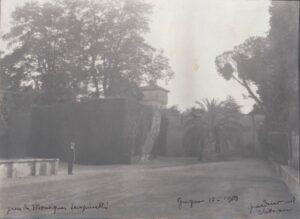
Muller-Ury standing in the Vatican Gardens, 10 June 1908. A photograph taken by a Monsignor Sciapirelli according to the artist’s annotations.
The last Pope he painted was Pius XII, and for many years this hung in the Archbishop’s residence in New York, where Cardinal Francis Spellman, who was also painted three times by the artist in the 1940s, was photographed beneath it. This portrait, of which two versions are extant, both today in Switzerland – but there may be others – was almost certainly made from photographs.
Of course, he also painted many others in the American hierarchy, both Cardinals James Farley in 1913 and Patrick Hayes (this 1924 masterpiece tragically cut down), the Archbishop of San Francisco in 1923 and at the end of his life the Archbishop of New Orleans. And he was generous in painting portraits of friends amongst the clergy, two portraits of Archbishop Thomas Kennedy, Rector of the North American College, the first particularly fine, and a masterpiece of the founder of the new college on the Janiculum in Rome, his friend Monsignor Charles O’Hern. There may well be more portraits to be discovered.
PLEASE CLICK ON A PHOTOGRAPH TO READ THE CATALOGUE ENTRY.


